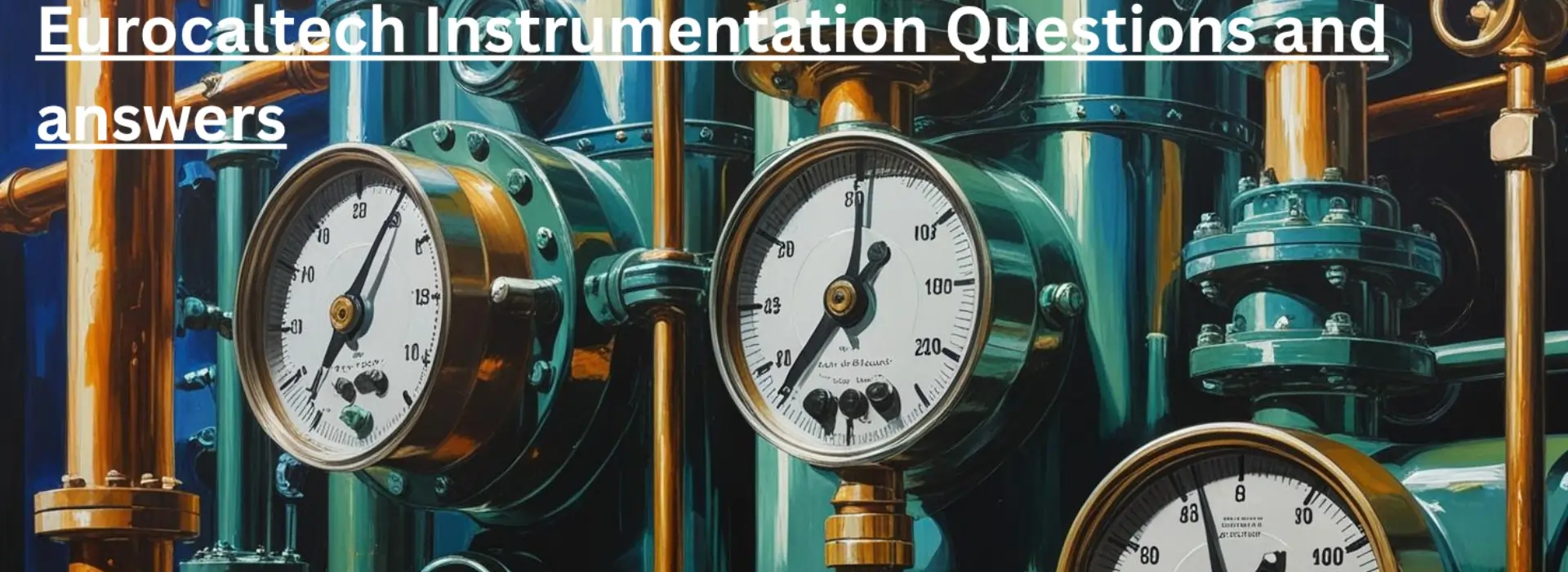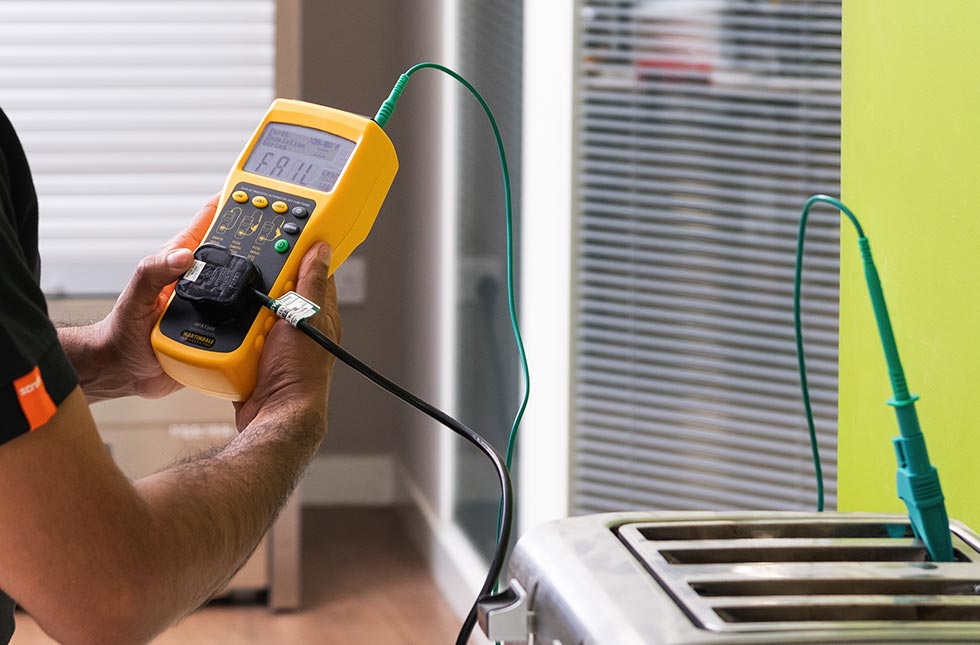
Temperature Instrumentation questions and answers
Different methods of temperature measurement include mechanical and electrical methods. Mechanical methods involve mercury in glass thermometers, bimetallic thermometers, pressure spring thermometers, compensated thermometer systems, gas filled thermometers, and vacuum pressure thermometers. Mechanical methods involve mercury in glass thermometers, which expand when heated, while bimetallic thermometers use different metals with different coefficients of linear expansion. Pressure spring thermometers have four classes: liquid filled, vapor pressure, gas filled, and mercury filled. Electrical methods involve thermocouples, which are simple devices connected to a measuring instrument, providing accurate and sensitive temperature measurements.
Resistance-Temperature Detectors (RTDs) are used for precise temperature measurement, consisting of a five-wire thermometer wrapped around an insulator and enclosed in a metal. The resistance increases as temperature increases, with platinum and nickel being the most common materials. Two-wire RTD systems are used for short distances, while three-wire systems are used for long distances. Potentiometer temperature measuring circuits use a thermocouple, two different signals (AMP and RC), and a servo balancing motor. The constant voltage circuit consists of a rectifier, a filter capacitor, and zener regulation.
T E M
P R E T U R E
What
are the different methods of temperature measurement? Explain.
The different methods of
temperature measurement are:
1. Mechanical 2. Electrical .
Mechanical methods:
1.
Mercury in glass thermometers: This consists of a glass
tube of very fine bore joined to a reservoir at the bottom and sealed at the
top. A measured quantity of mercury is the enclosed. When the thermometer is
heated the mercury expands much more than the glass and is therefore forced to
rise up in the tubing a scale is fixed at the side.
2. Bimetallic
Thermometer: Two metals whose coefficient of linear expansion is
different are welded and rolled together to the desire thickness. The actual
movement of a bimetal is its flexivity with one end fixed, a straight bimetal
strip deflects in proportion to its temperature, to the square of its
length and inversely with its thickens.
3. Pressure Spring Thermometers: There are four classes
of pressure spring thermometers.
1. Liquid filled = class 1
2. Vapor pressure = class 2
3. Gas filled = class 3
4. Mercury filled = class 4
Liquid filled & Mercury filled:
Both type; operate on the principle of thermal expansion .Where the
bulb is immersed in a heated substance. The liquid expands causing the pressure
spring to unwind. The indicating, recording or controlling mechanisms are
attached to pressure spring.
Compensated Thermometer System:
Compensations are provided in order to nullify the effect of changes in
ambient temperature. The compensation in liquid filled expansions thermal
system consists of the second tubing and helical element, both liquid filled.
The two elements are so constructed that the measuring helical floats on a
movable base the position of which is governed by the compensating helical. The
two tubing and helical are matched in volume so that variation in temperature
at the instrument case and along the capillary tubing produces equal motion
from both helical. Such motion nullity each other so that only motion produced
by varying the bulb temperature actuates the recorder pen.
Gas filled Thermometers:
This type depends upon the
increase in pressure of a confirm gas (constant volume) due to temperature
increase. The relation between temperature and pressure in this kind of system
follow
![]() P1 T1
P1 T1
![]()
![]()
![]() P2 T2
P2 T2
The system is filled under high pressure. The increase pressure for
each degree of temperature rise is therefore greater than if the filling
pressure were low. Nitrogen the gas most after used for such systems, because
it chemically insert and possesses a favorable coefficient thermal expansion.
Vapor - Pressure
Thermometers:
Vapor pressure thermometers depend
upon vapor pressure of liquid, which only partially fills the system. At low
temperatures the vapor pressure increase for each unit temperature charge is
small; at higher temperature the vapor pressure change is much greater.
Electrical method
of temperature measurement:
1. Thermocouples: It is a simple device
consisting of a dissimilar metal wires joined at their ends. When an of each
wire is connected to a measuring instrument thermocouples becomes an accurate
and sensitive temperature measuring device.
Resistance – Temperature Detectors (RTD):
RTD's are generally used for
precise temperature measurement. It consists of a five wire wrapped around an
insulator and enclosed in a metal. The most sheath of a resistance thermometer
resembles that of bimetallic thermometer bulb.
PRINCIPLE: "Resistance
increases as temperature increase"
Rt. = Ro (1 + ? t)
Rt. = Resistance of
Temperature to measured.
Ro. = Resistance of zero temperature.
? =
t = Temperature to be measured.
These metals
have a positive temperature co-efficient of expansion. Therefore resistance
increases as the temperature increases.
Types
of material used: (1) Platinum (2) Nickel
These metals
have a positive temperature co-efficient of expansion. Therefore resistance
increases as the temperature increases.
Calculation of Resistance or
Pt100.
Ro.
= 100
x for platinum = 0.00385 /c.
To calculate Resistance at 100'c.
R100 = 100 [ 1+ ( 38.5 x 10
4 x 100 ) ]
= 100 + (100 x 0.385)
R100 = 138.5
Resistance at 100'c = 138.5
50. What
is Pt 100 mean?
Pt100 means 100 OHMS at 0'C
for a platinum resistance bulb.
51. What
is two wires and three wires R.T.D. system?
Two wire R .T .D. system:
Two wire RTD system use
for short distance like a compressor field local panel.
Three wire System:
Three wire system use for long
distance coke a field to control Run.
The third wire is used for
compensation of lead wire resistance.OPERATION:
The input to the instrument is a measurement of some in the processes using a sensing element (such as thermocouple) or a device to produce direct voltage, which is the voltage (signal). This voltage is subtracted from a voltage developed by a known constant voltage in a potentiometer measuring circuit. The subtraction occurs by connecting two voltages in series with the opposing polarity, difference between these two voltages produces signal, the voltage going to the amplifier. The errors will positive or negative depending on which of the two voltages greater. When amplified, the error signal will drive servo balancing motor in appropriate direction to adjust circuit (actually drive the slide wire) until the difference between the feedback voltage and the input voltage is balance out. An error signal equal to zero results (null point) the balancing (servo motor is be longer driven)
55. What
is burnout feature? Explain.
Burnout provides the warning
feature of driving indicator the end of scale if the input circuit should open.
A burnout resistor is
provided which develops a voltage drop between the measuring circuit and the
amplifier. The polarity of the signal determines the direction of the servo
drive upon an open circuit in the input.
Upscale burnout: R value 10
M
Downscale burnout: R value
2.2 M
56. Explain
the block diagram of an amplifier in a temperature recorder.
57. Why
is a converter used in a temperature recorder?
The converter is designed to
convert D. C. input voltage into an A. C. input voltage proportional in
amplitude to the input.
58. Why
are Thermo wells used?
In numerous applications it
is neither desirable nor practical to expose a temperature sensor directly to a
process material. Wells are therefore used to protect against damage corrosion,
erosion, abrasion and high pressure processes. A thermo well is also useful in
protecting a sensor from physical damage during handling and normal operation.
Selecting a thermo well:
The significant properties
considered in selecting a material for the well are as follows:
1. Resistance to corrosion
and oxidation.
2. Resistance to mechanical
and thermal shock.
3. Low permeability
(Resistance to gas leakage).
4. Mechanical strength.
5. Thermal conductivity.
Material for Wells:
1. Stainless steal.
2. Inconel.
3. Monel.
4. Alloy steals.
5. Hastelloy 'C'.
59. How
will you calibrate a temperature recorder using a potentiometer?
Connect the potentiometer
output to the input of temperature recorder.
1. Connect the (+ve) to
(+ve) and (-ve) to (-ve).
2. If ambient compensation
is provided in potentiometer set it to the correct ambient temp.
3. If no ambient
compensation is provided take a thermometer and measure the correct ambient
temperature. Find out the corresponding mV s for that temperature for the given
input type of thermocouple.
4. While feeding subtract
the ambient temp. m v s from the corresponding temperature every time.
5. Adjust the necessary
adjustments.
Measuring Temperature with a Potentiometer:
1. Connect the input of the potentiometer to the thermocouple.
2. If no ambient
compensation is provided find out the corresponding mill volts for that
ambient temperature for the type of
thermocouple used.
3. Add the ambient
temperature mill volts to the corr. input mill volts measured. Find out from
the chart the corresponding temperature.
60. What
type of sensing element would you use to measure very low temperature?
The sensing element used for
measuring very low temperature is R. T. D.
(Resistance Temperature Detector)
61. What
are skin temperature thermocouples?
Skin thermocouples are
those, which are directly connected to the process without any thermo
well. Used for measuring the skin
temperature of heaters furnaces, flue gas etc.
62. What
is the specialty of thermocouples lead wires?
They should be of the same
material as the thermocouple.
63. What
is the difference the wheat stone bridge and a potentiometer?
The difference between a
potentiometer and a wheat stone bridge measuring instrument is that potentiometer
is a voltage measuring instrument and wheat stone bridge is a current
measuring instrument.




